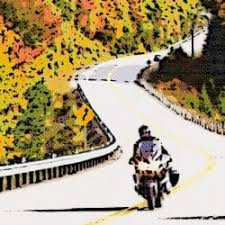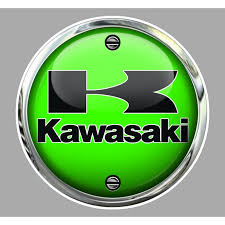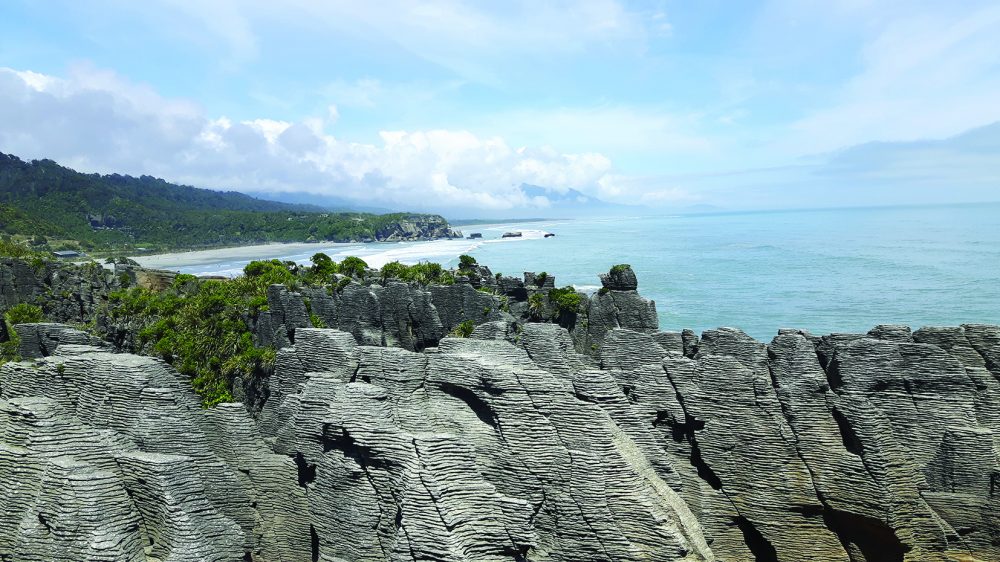
Those of you who have been following this mini-series will have discovered that while mid-capacity scooters tick a lot of practical boxes, they don’t provide a visceral low-speed experience to augment a sight-seeing tour through Scandinavia. Given that a feet-forward riding position is on my checklist this time around my next area of exploration was obvious: I needed to look at cruisers.
The thing is, cruisers are surprisingly hard to find in the UK market. The reality is that we’re a nation of recovering sports-bike addicts, shifting to adventure bikes as we and our road network suffer the ravages of age and abuse. Those still looking for their low-tech, low-speed, hair-in-the-wind experience go to the player everyone else gave up competing with; they go to Harley-Davidson.
And yet, my riding experience of previous Harleys was underwhelming in the extreme. Weak brakes, scrunched-up riding positions, minuscule fuel tanks and non-existent suspension led me to conclude that Harley-Davidson were rolling art, and nothing more. Based on conversations with Harley owners over the last few years, my mistake had been riding the “small” Harleys, rather than the “full-sized” ones. They assured me that the build quality and riding experience on the big-twin models was in another league, and that I should stop using their 300kg+ kerb weights as a reason to avoid them.
One of the latest of these new Softail models was the Harley-Davidson Sport-Glide. I was intrigued; blacked-out engine with a minimum of chrome, hard, lockable quick-release luggage as standard and even a nifty removable mini-fairing. Black & polished alloy cast wheels and a comfy-looking bucket seat completed the image of a relaxed, light-duty tourer, clearly designed as a stepping stone for those not yet ready to commit to a fully-faired bagger from the Touring range.
The first surprise was the lack of an ignition key. Like the little Honda scooter, all Harleys now use proximity keys instead. The kill switch toggles the ignition state if the fob is nearby, allowing you to start the engine without fishing through your pockets, although locking the luggage still requires an old-fashioned key. Harley also has a typically low-tech solution to the question of opening the petrol tank – they simply don’t make it lockable.
Tucked away on the left instrument cluster is another surprise – a cruise control switch. Further up is the control for the multi-function trip computer, represented by a small LCD screen tucked away underneath the analogue speedometer. You can scroll through a couple of trip meters, the clock, fuel range and even current engine RPM, with a digital segmented fuel gauge running along the top of the display. A single number on the right indicates the current gear, although generally you’ll only need it for confirming when you’re in sixth on motorways.
That enormous clutch-lever is a two-finger pull, and the rumbling engine responds smoothly and easily to the feather-light throttle. I’ve ridden 125’s that were more difficult to set off on, although I did later discover some slight hesitation on initial throttle openings that my salesman attributed to the upgraded camshaft & associated fuelling changes. I would have to ride a stock example to be sure, but it was no worse than any other modern bike I’ve ridden lately.

Harley’s new engines are now fully counter-balanced, leaving just enough of a throb to remind you it’s there without causing your glasses to rattle off your nose at stop lights. Turning onto the road demonstrated that low-speed manoeuvres would be a little tricky with that large rear-brake pedal, but I had already forgotten that this machine weighed a full 100kg more than the bike I’d arrived on – it certainly didn’t feel like it.

Rolling down the first stretch of road demonstrated a compliant and controlled suspension system at work, communicating the details of the road surface whilst softening their impact. As I approached the first junction I braced myself to begin the process of slowing down 317kg of steel using a single front disk. Imagine my surprise then when I had to ease off the front brake entirely to avoid stopping a dozen metres short of the lights, such was the bite and power of that single four-pot calliper. Harley now out-sources their braking components to Brembo, and the Harley-Davidson Sport Glide stops impressively quickly despite its considerable weight.
Taking a stop to look up some specs online revealed more interesting facts. Thanks to the low-revving engine (redline is somewhere around 5,000RPM) Harley valve trains use hydraulic lifters, meaning that they will never need their clearances adjusting – ever. The kevlar final drive belt means there’s no chain to oil, and anecdotally have been known to last 70,000 miles and beyond without replacement. That new eight-valve engine is also more frugal than the previous generation, thanks in part to twin spark plugs per cylinder, and averages of 50-55mpg are to be expected in normal riding.
Submitting to the inevitable and introducing small oil coolers to keep the exhaust valve temperatures down also means that there was no more heat spilling off the power plant than from any other bike I have ridden. And this was no ordinary engine; the previous owner had dug into the performance section of Harley’s famous parts catalogue and equipped this bike with a higher-lift ‘Torque’ camshaft, a freer-flowing exhaust and intake and a full dyno remap to match. According to the Harley salesman, horsepower was up 30bhp over the original 75, with a matching jump in torque.
Those may not sound like earth-shattering numbers from what is essentially a 1.8litre engine, but the area under the torque curve is immense, delivering more thrust at 3,000RPM than a KTM SuperDuke does anywhere in the rev range. While acceleration is of course a factor of mass, there’s simply no ignoring that much sheer thrust. Let the engine climb up to 3-4k and you’ll be holding on for dear life, with no signs of the engine letting up. Admittedly I would expect an unmodified engine to reign things in somewhat, but all of those upgrades were fully warrantied and fitted by Harley themselves for around £2,000 extra. Think of it as a Sport Glide”R”, then.
So; the engine and brakes impress, in a way that I genuinely didn’t expect. What about the handling? The aforementioned low-speed manners are faultless, and while I daresay that tighter roads might require a lower pace than from a modern super-naked it handled the sweeping curves of Oxford with aplomb. Twice metal met tarmac despite my caution, although I later discovered it to be the after-market exhaust system that was grounding out, not the considerably higher forward-set footpegs. I’m quite certain I would not recommend a Harley-Davidson to someone plotting to chase down sports bikes through the Pyrenees, but then I already have my V-Strom for that.
Which brings us to the raison d’être for this test; I didn’t need or want another fast sports-tourer – I needed something that would be just as much fun when ridden in convoy behind a Belgian camper van as it would chasing down empty tarmac. And I’m extremely pleased to report that the truly characterful engine, a joy to use at any speed in any gear, made for a fantastic low-intensity journey. Motorway riding was a little less relaxed thanks to the minimal windshield. My example was equipped with the optional taller screen, but I do wonder if removing it entirely might net less buffeting.

The integrated panniers solve the luggage problem; the 19-litre tank and (relatively) impressive economy makes 200 miles between fill-ups possible, and the wide, plush seat means I could happily empty that tank multiple times in a single day. I’d personally want to bring the handlebars a little further back to compensate for my stubby T-Rex arms and add a luggage rack to increase carrying capacity further, but the beauty of that Harley parts catalogue is that there are fully-warrantied options available for every taste and requirement.
Dipping too heavily into that catalogue can prove expensive, however, which is a problem when the Sport Glide – one of the cheapest bikes in the Softail range – starts just shy of £15,000. Add an exhaust, a couple of replacement trim pieces to dispatch the remaining chrome and we’re quickly approaching BMW K1600GT territory. Many people will find those prices somewhat difficult to justify when a similar sum thrown at the BMW salesman will see you rewarded with a much lighter, much faster, and genuinely capable motorcycle.
But if we accept for a moment (and I’m still struggling with this myself) that in 2019 big bikes cost big money and start to look closely at Harley’s offerings, you can start to see where all that cash goes. There’s no electronic suspension, but then there’s barely any wiring to speak of – at least, not that you can see, with cables routed internally and hiding inside the handlebars and frame. There’s no forum-argument-winning top-end power to be found, but while an inline-four or 90-degree twin is a more efficient way to go fast, that big Harley engine is simply more enjoyable to use. It’s satisfying in the same way that power tools and food processors are – you find yourself doing odd jobs around the house or making smoothies just for an excuse to use them.
That headline price is going to prove the biggest challenge for me, however. The build quality is incredible, the paint deep and mirror-perfect, and Harley residuals are famously good, although I suspect that’s because many owners barely ride the things. But having met a few who do pile on the miles without a single complaint or mechanical malady it’s clear that an under-stressed, proven formula can make for a reliable motorcycle. I also appreciate the fact that Harley make it easy for those of less average proportions to swap out handlebars, footpegs and seats, although I wish that such items could be fitted at the factory rather than expensive dealer-fit extras.
I’m not done shopping just yet- and I’d very much like to try out an Indian Scout to see if I can find a lower-priced alternative, but the fact of the matter is that the Harley-Davidson Sport Glide has set the bar very high indeed. The search continues…
Nick Tasker
First published in Slipstream May 2019




